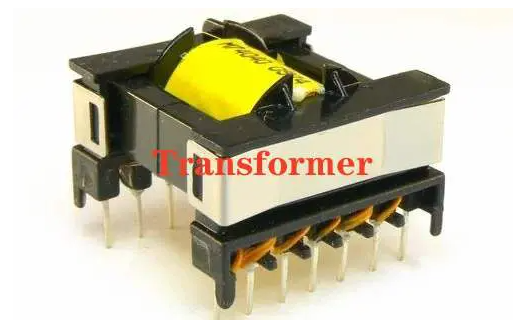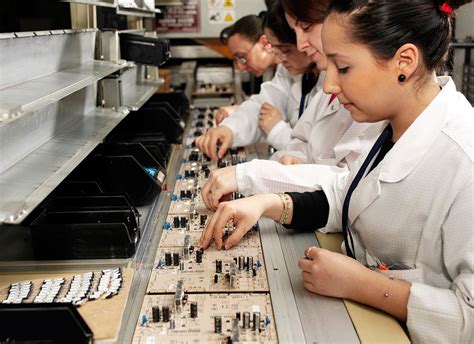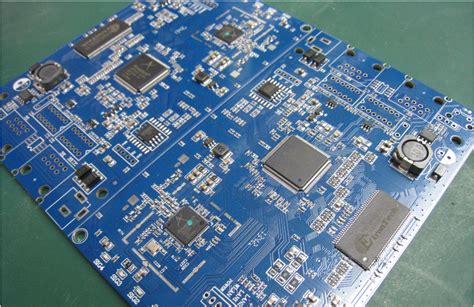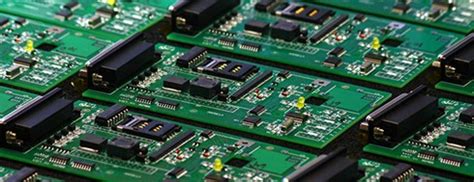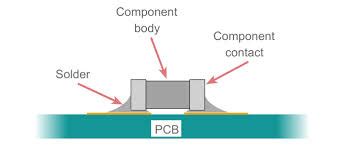Low-Cost PCB Assembly: A Comprehensive Guide
Introduction
Printed Circuit Board (PCB) assembly is a critical process in the manufacturing of electronic devices. As the demand for affordable electronics continues to grow, the need for low-cost PCB assembly has become increasingly important. This article provides a comprehensive guide to low-cost PCB assembly, covering various aspects such as design considerations, material selection, assembly techniques, and cost-saving strategies. By understanding these elements, manufacturers can produce high-quality PCBs at a reduced cost, making electronic devices more accessible to a broader audience.
1. Design Considerations for Low-Cost PCB Assembly
1.1 Simplify the Design
One of the most effective ways to reduce PCB assembly costs is to simplify the design. A simpler design requires fewer components, less complex routing, and fewer layers, all of which contribute to lower manufacturing costs. Here are some tips for simplifying your PCB design:
- Minimize the Number of Components: Use multi-functional components where possible to reduce the total number of parts.
- Reduce Layer Count: Opt for a single or double-layer PCB instead of a multi-layer design if the application allows.
- Standardize Components: Use standard, off-the-shelf components rather than custom or specialized parts.
1.2 Optimize Component Placement
Efficient component placement can significantly impact the cost of PCB assembly. Proper placement can reduce the complexity of the routing, minimize the PCB size, and improve manufacturability. Consider the following:
- Group Similar Components: Place components with similar functions close to each other to simplify routing.
- Minimize Trace Lengths: Shorter traces reduce material usage and improve signal integrity.
- Consider Assembly Process: Ensure that components are placed in a way that facilitates automated assembly processes, such as Surface Mount Technology (SMT).
1.3 Design for Manufacturability (DFM)
Design for Manufacturability (DFM) is a critical aspect of low-cost PCB assembly. DFM involves designing the PCB in a way that makes it easy and cost-effective to manufacture. Key DFM considerations include:
- Component Orientation: Align components in the same direction to streamline the assembly process.
- Pad and Trace Sizes: Use standard pad and trace sizes to avoid custom tooling and reduce manufacturing complexity.
- Clearance and Spacing: Ensure adequate clearance and spacing between components to prevent assembly issues.

2. Material Selection for Low-Cost PCB Assembly
2.1 PCB Substrate Materials
The choice of PCB substrate material can have a significant impact on the overall cost. Common substrate materials include:
- FR-4: A widely used, cost-effective material suitable for most applications.
- CEM-1 and CEM-3: Lower-cost alternatives to FR-4, suitable for less demanding applications.
- Paper Phenolic: The least expensive option, typically used for single-layer PCBs in low-cost consumer electronics.
2.2 Component Selection
Selecting cost-effective components is crucial for low-cost PCB assembly. Consider the following:
- Standard Components: Use standard, widely available components to avoid higher costs associated with custom or specialized parts.
- Bulk Purchasing: Purchase components in bulk to take advantage of volume discounts.
- Alternative Suppliers: Source components from multiple suppliers to find the best prices and ensure availability.
2.3 Solder and Adhesives
The choice of solder and adhesives can also impact the cost of PCB assembly. Consider the following:
- Lead-Free Solder: While lead-free solder is more environmentally friendly, it can be more expensive. Evaluate the cost-benefit based on your application.
- Solder Paste: Use standard solder paste formulations to avoid additional costs associated with specialized materials.
- Adhesives: Select cost-effective adhesives that meet the performance requirements of your application.
3. Assembly Techniques for Low-Cost PCB Assembly
3.1 Surface Mount Technology (SMT)
Surface Mount Technology (SMT) is a widely used assembly technique that offers several cost advantages:
- High Automation: SMT allows for high levels of automation, reducing labor costs and increasing production speed.
- Smaller Components: SMT components are typically smaller and less expensive than through-hole components.
- Higher Density: SMT enables higher component density, allowing for smaller PCBs and reduced material costs.
3.2 Through-Hole Technology (THT)
While SMT is generally more cost-effective, Through-Hole Technology (THT) may still be necessary for certain components. To minimize costs when using THT:
- Limit THT Components: Use THT only for components that cannot be replaced by SMT equivalents.
- Automated Insertion: Use automated insertion machines to reduce labor costs associated with manual assembly.
3.3 Mixed Technology Assembly
In some cases, a combination of SMT and THT may be required. To optimize costs in mixed technology assembly:
- Minimize THT Components: Use THT only when absolutely necessary and rely on SMT for the majority of components.
- Efficient Layout: Design the PCB layout to facilitate both SMT and THT processes, minimizing the need for additional assembly steps.
4. Cost-Saving Strategies in PCB Assembly
4.1 Economies of Scale
One of the most effective ways to reduce PCB assembly costs is to take advantage of economies of scale. By increasing production volume, manufacturers can spread fixed costs over a larger number of units, reducing the cost per unit. Strategies to achieve economies of scale include:
- Bulk Production: Produce PCBs in large batches to reduce per-unit costs.
- Long-Term Contracts: Establish long-term contracts with suppliers to secure lower prices for materials and components.
4.2 Outsourcing Assembly
Outsourcing PCB assembly to specialized manufacturers can be a cost-effective strategy, especially for small to medium-sized companies. Benefits of outsourcing include:
- Lower Labor Costs: Outsourcing to regions with lower labor costs can significantly reduce assembly expenses.
- Access to Advanced Technology: Specialized assembly manufacturers often have access to the latest technology and equipment, improving quality and reducing costs.
- Reduced Overhead: Outsourcing eliminates the need for in-house assembly facilities, reducing overhead costs.
4.3 Lean Manufacturing
Implementing lean manufacturing principles can help reduce waste and improve efficiency in PCB assembly. Key lean manufacturing strategies include:
- Just-In-Time (JIT) Production: Produce PCBs only as needed to reduce inventory costs and minimize waste.
- Continuous Improvement: Regularly review and optimize assembly processes to identify and eliminate inefficiencies.
- Quality Control: Implement robust quality control measures to reduce defects and rework, lowering overall costs.
4.4 Design Reuse
Reusing existing PCB designs can save time and reduce development costs. By leveraging proven designs, manufacturers can avoid the costs associated with designing and testing new PCBs. Strategies for design reuse include:
- Modular Design: Develop modular PCB designs that can be easily adapted for different applications.
- Component Standardization: Standardize components across multiple designs to simplify procurement and reduce costs.
- Design Libraries: Maintain a library of proven PCB designs and components for quick reference and reuse.

5. Quality Assurance in Low-Cost PCB Assembly
5.1 Automated Optical Inspection (AOI)
Automated Optical Inspection (AOI) is a critical quality control tool in low-cost PCB assembly. AOI systems use high-resolution cameras and image processing software to detect defects such as soldering issues, missing components, and misaligned parts. By catching defects early, AOI helps reduce rework and scrap costs.
5.2 In-Circuit Testing (ICT)
In-Circuit Testing (ICT) is another essential quality assurance tool. ICT involves using test probes to check the electrical performance of individual components and circuits on the PCB. ICT can quickly identify faults such as open circuits, short circuits, and incorrect component values, ensuring that only high-quality PCBs move to the next stage of production.
5.3 Functional Testing
Functional testing involves testing the assembled PCB to ensure it performs as intended. This type of testing is crucial for verifying that the PCB meets the required specifications and functions correctly in its intended application. Functional testing can be automated to reduce labor costs and improve consistency.
5.4 Environmental Testing
Environmental testing evaluates the PCB’s performance under various environmental conditions, such as temperature extremes, humidity, and vibration. While environmental testing adds to the overall cost, it is essential for ensuring the reliability and durability of the PCB, particularly in demanding applications.
Conclusion
Low-cost PCB assembly is a complex process that requires careful consideration of design, materials, assembly techniques, and cost-saving strategies. By simplifying designs, selecting cost-effective materials, leveraging advanced assembly techniques, and implementing robust quality assurance measures, manufacturers can produce high-quality PCBs at a reduced cost. As the demand for affordable electronics continues to grow, mastering the art of low-cost PCB assembly will be essential for staying competitive in the market. By following the guidelines outlined in this article, manufacturers can achieve the delicate balance between cost and quality, ensuring the success of their electronic products.

